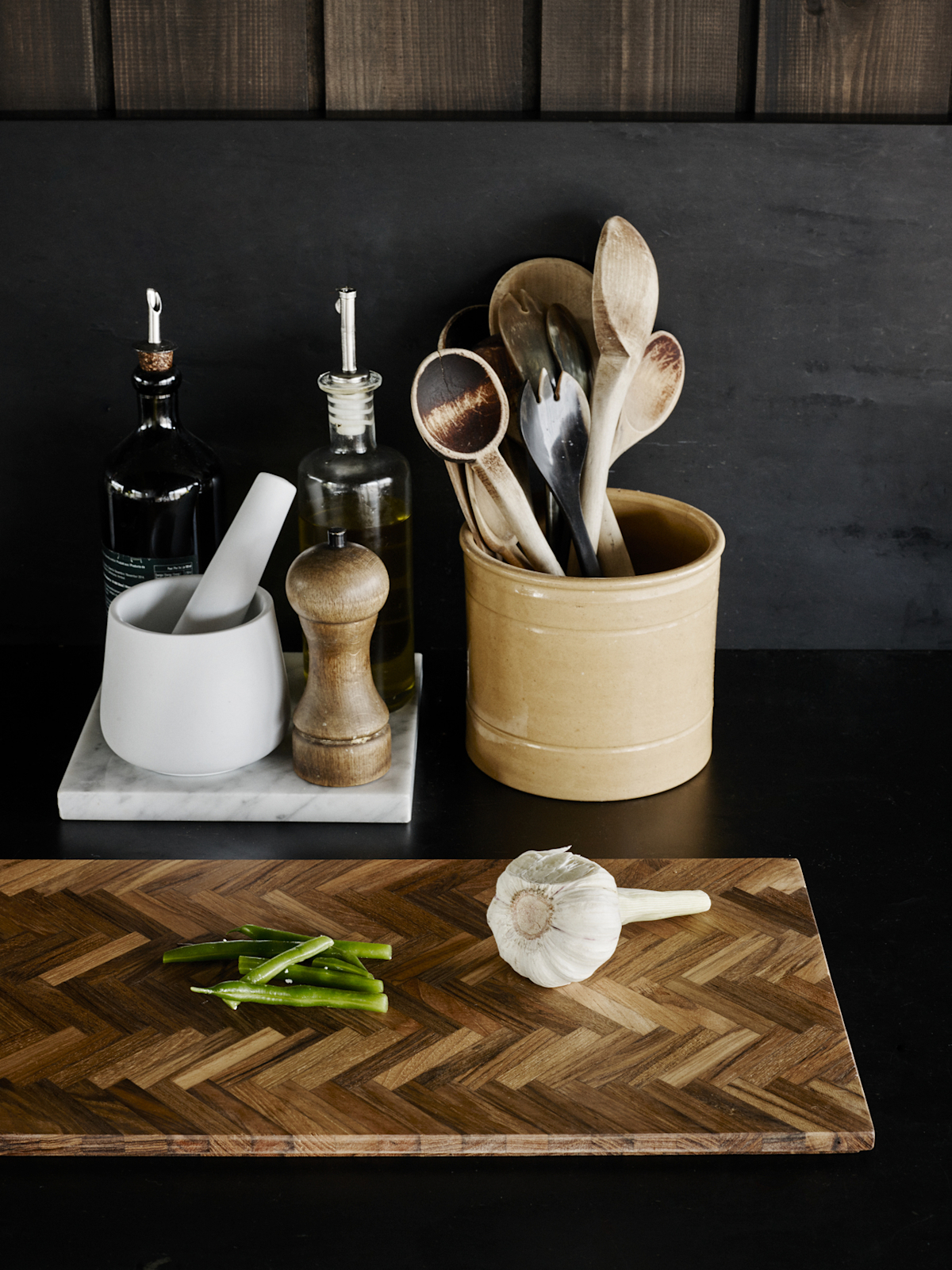
Better Choices
Reducing our carbon footprint at home
A look at the sustainable practices in our homes.
Free Carbon-Offset Shipping on orders from $175 USD. Exclusions Apply.
Words by Gillian Corbin
A look at the sustainable practices in our homes.
Words by Gillian Corbin
Photography courtesy of brand partners

Skagerak Dania Cutting Board.
When we think about our carbon footprint, we tend to focus on the cars we drive or the flights we take. The truth is, many of our negative environment-impacting behaviours start before we leave the house. Daily activities like sending an email or streaming our favourite shows globally produce enough emissions to rival a small country. Even the well-intentioned act of googling “How do we lower our carbon emissions?” impacts our collective carbon footprint. So how can we do good when all of our conveniences negatively affect the planet? The answer is not easy, but it is simple.
Examining our carbon footprint means taking a holistic look at our lifestyles, from the food we eat to the things we buy to the waste we create.

Skagerak Sild Tray.
What we eat
According to research conducted by Duke University, the food system generates about the same proportion of global greenhouse gas emissions as does transportation. This means what we eat will play a pivotal role in the future of our planet. It comes as no surprise that the production of meat, and more specifically beef, has been a significant contributor to climate change. By choosing vegetable options, we are doing a lot more than being kind to our bodies “producing and distributing a serving of beef releases about 50 times more greenhouse gas than putting corn on your table”. This is an opportunity to gently remind ourselves to take the meat off the menu, at least a couple of days a week.

ecoBirdy All Bright Art Corner Set.
What we buy
When it comes to outfitting our homes the impact of our choices extends far beyond our design preferences. The fast furniture industry, like fast fashion, has come under scrutiny for its staggering annual contribution to landfills around the globe; nearly 9 million tons of furniture are disposed of every year. So, what constitutes fast furniture? A piece of fast furniture is an item bought for the season and let go of a short time after; often made of low-quality materials like particleboard. Investing in highly durable and long-lasting household furnishings is an actionable step towards lowering our carbon footprint. The longer we keep a piece of furniture in our homes, the fewer items are being produced, which gradually lowers our emissions. In short, If we want to make our future furnishing purchases sustainable ones we should do things like:
Buy timeless and versatile pieces over trendy and seasonal ones.
Choose thoughtfully crafted items over mass-produced ones.
When possible, choose durable materials like solid wood that are easily repairable.
Look for brands that work towards carbon reduction.
What we waste
The amount of waste we produce makes a large impact on our carbon footprint; the effects of food waste alone are astounding. “One-third of greenhouse emissions globally come from agriculture, and 30% of the food we produce is wasted .” Discarded items like clothes and non-recyclable packaging get sent to dumps, and wasted food products rot, releasing greenhouse gases into the atmosphere.
To reduce our waste is to become thoughtful about the way we consume; one way to do this is by choosing household goods made with recycled materials. An increasing number of companies are making use of repurposed materials, from recycled glass to post-consumer recycled plastics and reclaimed wood. ecoBirdy have gone above and beyond to change the face of recycled plastic, making it more aesthetically pleasing and thus more desirable. In just two years, their innovative and relentless spirit has led them to the creation of a unique material they have coined, ecothylene®. The state-of-the-art technology used to create this fantastically colorful material is also significantly more eco-friendly than most plastic recycling procedures.
The truth is, we may never achieve a complete carbon-neutral status in our home; monitoring our household footprint is a start. But the goal is not to be perfect but instead to put effort into protecting the environment; small and incremental changes when done collectively can go a long way towards making a measurable difference.

Gillian is a content and communications manager based in Vancouver, British Columbia. Fueled by curiosity, she aims to share honest stories about mental health, race, and human relationships. She is currently telling stories at S’able Labs.
Reclaiming land, legacy, and the future of food.
A guide to care for your Terracotta planters.
Your guide to layering comfort into every room
All our orders are shipped with carbon off-set shipping.
Get access to exclusive discounts and products for all your projects.
Find the perfect gift for your loved one with our curated options.
Create your perfect registry and get gifts you will love.



